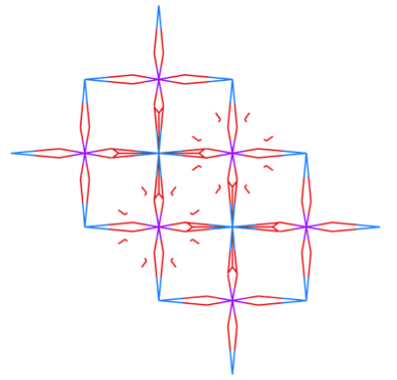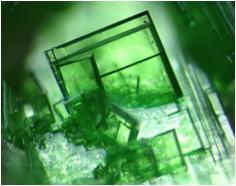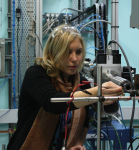Decorative, but a little deadly – Torbernite
What does it look like?

The crystal structure of Torbernite. Here the atom colours are: blue – uranium, orange – copper, purple – phosphorus, red – oxygen. Image generated by Mercury.
What is it?
Torbernite crystals exhibit exceptionally beautiful shades of green, from emerald to grass-green to apple-green, and thus may entice you to collect these crystals as ornaments for your tables – but beware; these crystals are capable of slowly leaking lethal radon gas which can cause lung cancer.

Image of a collection of torbernite crystals. Taken from: http://www.gemstonesadvisor.com/torbernite/
Torbernite crystals, Cu(UO2)2(PO4)2)·12H2O, are formed through a complex reaction of phosphorus, copper, water and uranium and form as secondary uranium deposits in granitic rocks. These materials belong to the autunite group and are found in the alteration zone of hydrothermal veins and pegamites that contain uraninite. Torbernite materials possess a significant environmental interest in that they exert an impact on the mobility of uranium in phosphate bearing systems such as uranium deposits and so can act as a reactive barrier that uses phosphate to limit the transport of uranium in groundwater. As such, the presence of torbernite has been used by prospectors as an indicator of uranium deposits.
Where did the structure come from?
Torbernite occurs in tabular blocks that may be very thin to moderately thick. The crystals have a perfect cleavage parallel to the basal plane and thus can resemble mica. This particular structure of torbernite that we have featured was presented in Locock, A.J. and Burns, B.C. The Canadian Mineralogist (2003), vol. 41, pp. 489 – 502.






